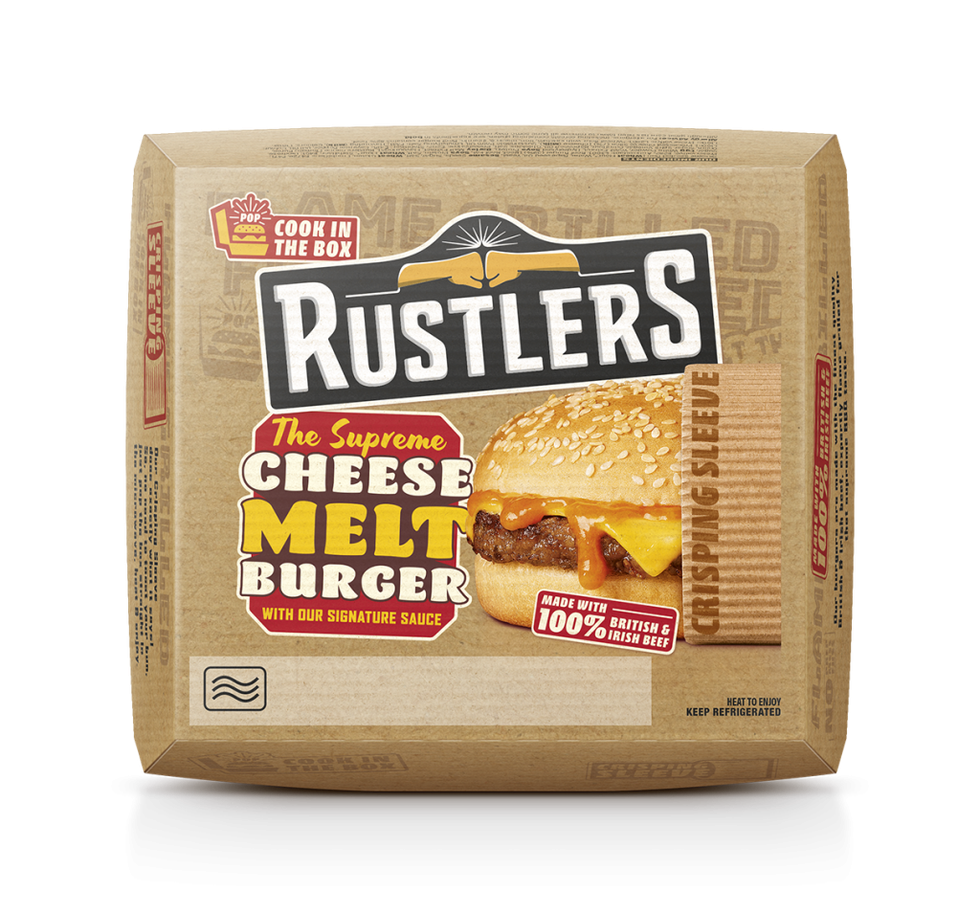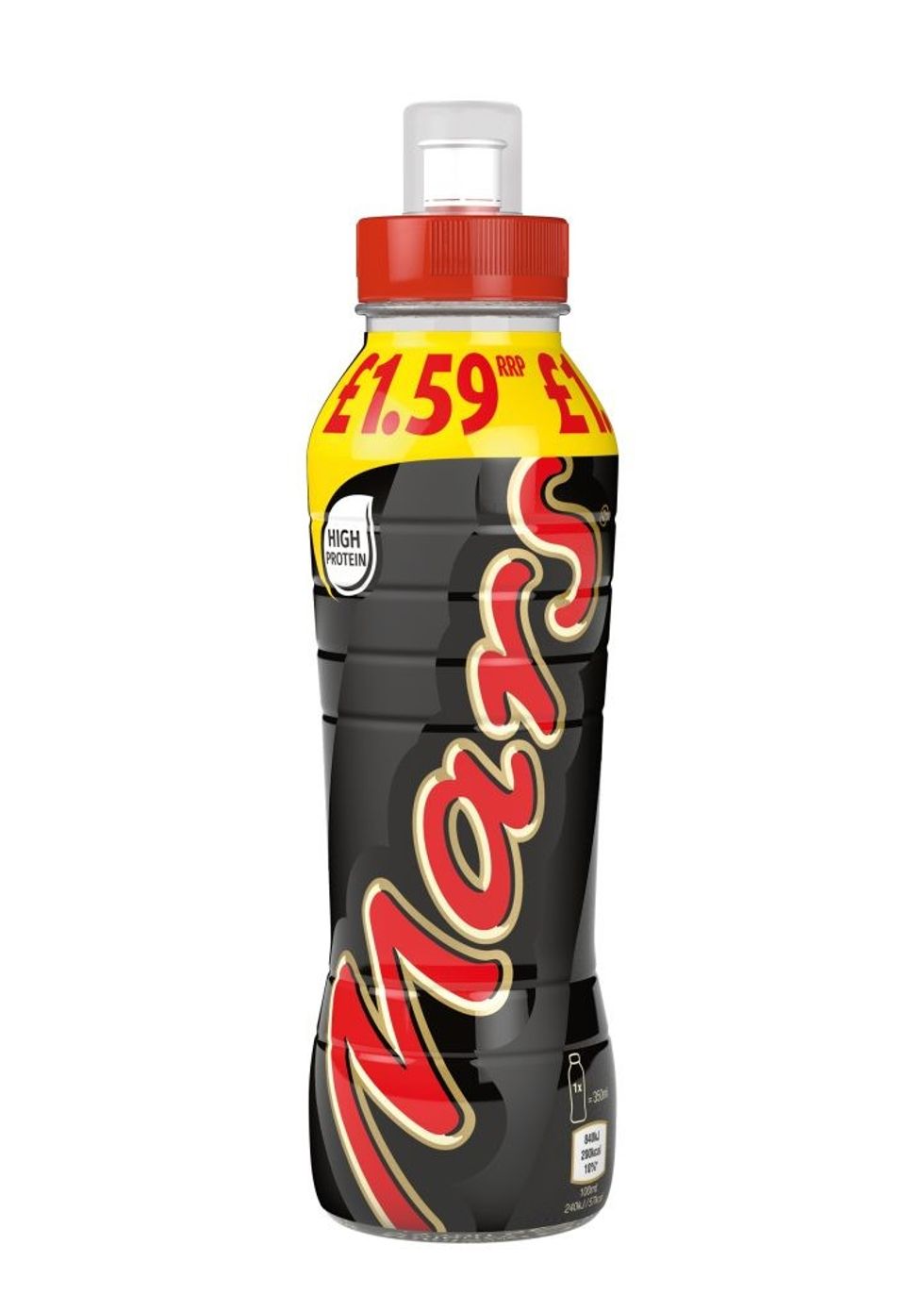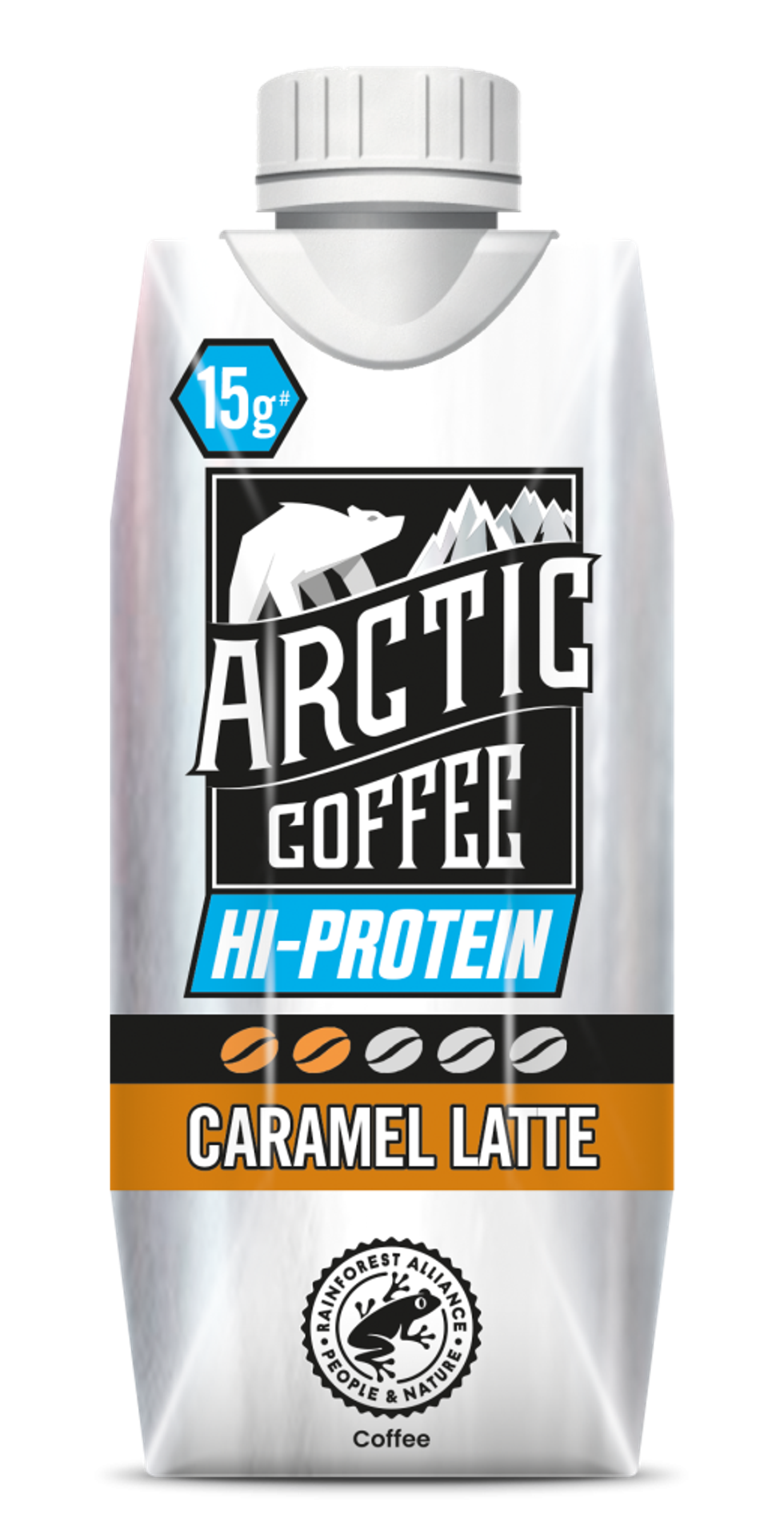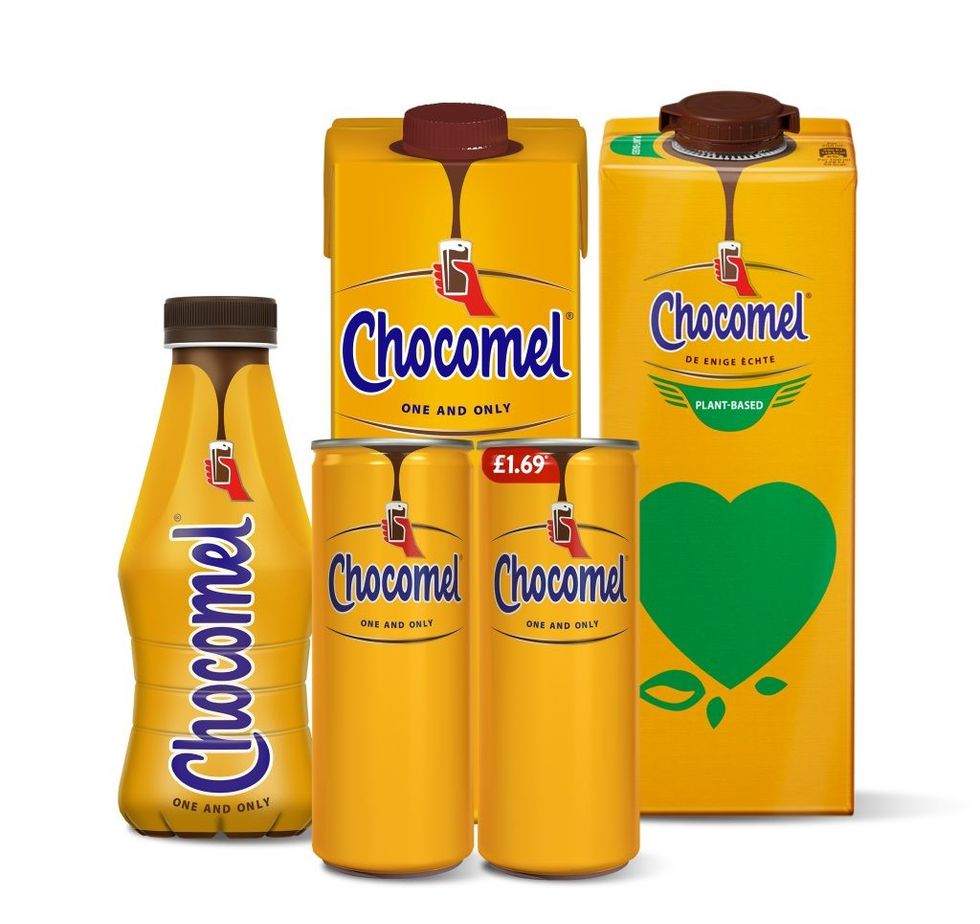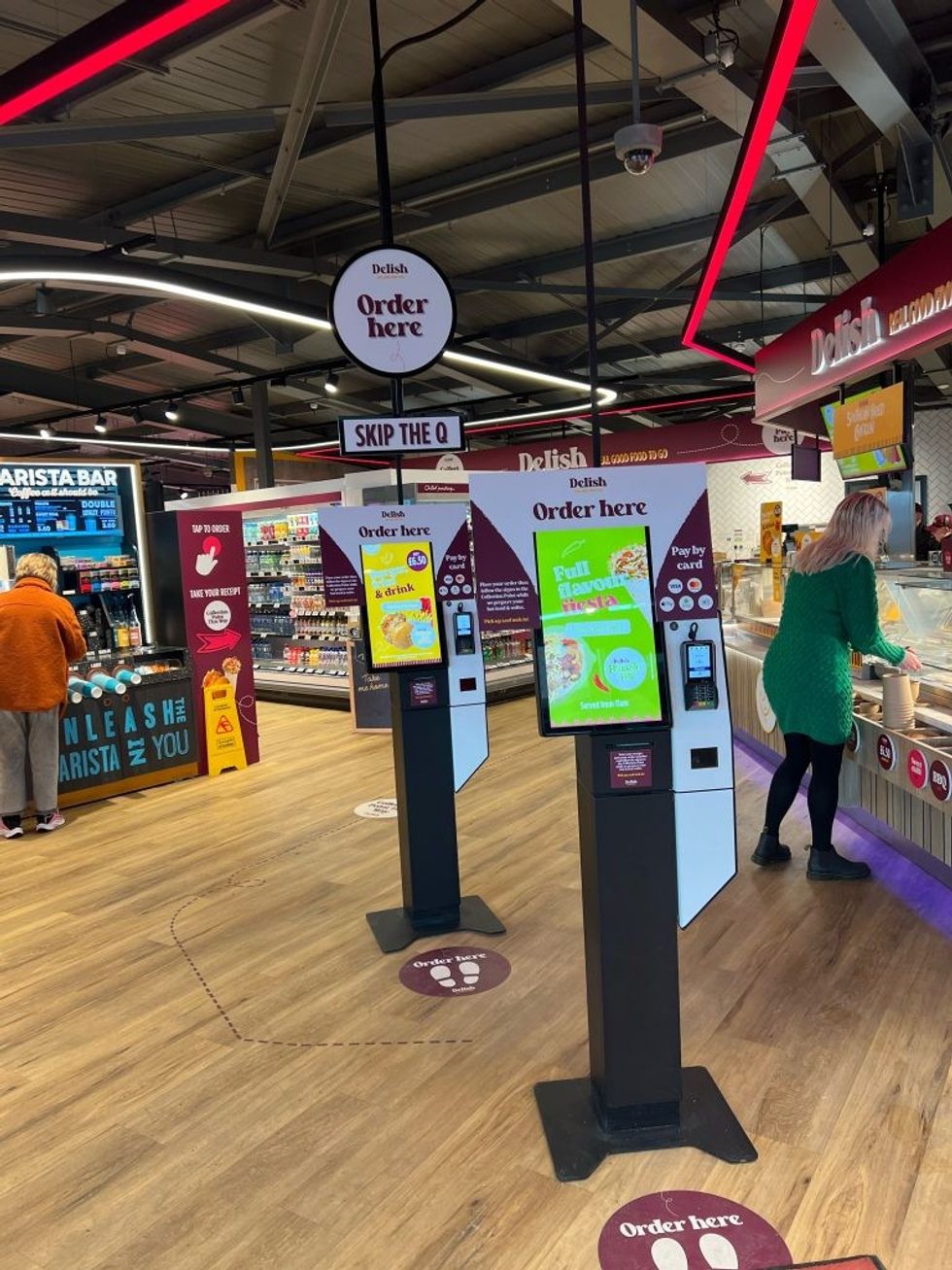In today's dynamic retail landscape, local convenience stores are no longer just a pit stop for milk and daily essentials. They are emerging as much more than that and with right strategy and little innovation, they can easily also be prime destinations for grabbing quick meals and drinks.
The UK food to go sector has been tipped to grow 3.5 per cent in 2024, reaching a value of £23billion, according to a new report from Lumina Intelligence. The report adds that convenience store grab and go achieved strong food to go growth versus pre-covid, driven by investment in ranges and value and that value growth is expected to have been +17.4 per cent from 2019-2024.
With the food-to-go sector poised for significant growth, it's essential for retailers to leverage trends, innovation, and strategic partnerships to position themselves as a wholesome destination store, even as a competitive alternative to a local foodservice outlet.
According to TWC’s MealTrak, FTG sales through convenience stores have risen by 5 per cent in the last 12 months despite the cost-of-living crisis and other factors. The segment has thus been emerging as one of the biggest drivers of sales for independent convenience stores.
Food to go remains the lion-share of the eating out market, with 71 per cent of spend. Eating out has seen faster growth (+9.9 per cent) compared to food to go (+6.3 per cent) as the market recovers from Covid years.
As the trend increases, convenience stores and forecourts are expected to benefit from being more accessible for food-to-go missions and their strong value positioning, especially with various meal deals.
In fact, it is one of those sections, particularly hot and fresh food-to-go, which retail experts feel that retailers have some level of control, be it in terms of sales or margin.
Food and convenience retail industry guru and pathfinder Scott Annan is known to bat for proprietary fresh food, saying this section can easily be developed into a store’s unique selling point, something that can be nurtured further to beat competition and bring more footfall.
He feels that proprietary fresh food-to-go is the only category that can increase customer visits, store margin and associated impulse sales of confectionery, snacks and drinks.
The key point and the most noteworthy aspect of FTG is the promising margin, particularly in the hot food section.
FTG expert Gavin Rothwell feels working with well-known brands can provide a good route for retailers in this section, adding instant credibility to the offer. He also feels that the food section can be a great savior amid an increasingly volatile legislative environment.
Quick Snack
Local convenience stores are well positioned to cater to changing consumer needs when it comes to ready meals and a quick grab and go. Traditionally, local c-stores have been stocking some lines of hot food; usually made on the premises. These lines not only have been instrumental in boosting sales but also in helping retailers create a unique brand image and in-roads in the local community.
Over the years, traditional meal cycles and routines have been replaced by snacking and more grab-and-go approach.
Ross Davison, Head of Convenience at Kepak (Foods Division), home of Rustlers, strongly feels that convenience retailers should strategise food-to-go to cater to every demand.
“Take-away foods, cold sandwiches and burgers represent one third of all food-to-go sales. Burgers have seen growth driven across convenience stores, forecourts and workplace/vending. Meanwhile hot sandwiches continue to perform well, seeing double-digit growth,” Davison told Asian Trader.
Within food-to-go, cold sandwiches and burgers dominate, with combined sales of £5.5bn representing one third of all food-to-go sales. Burgers rank as the third biggest category worth £1.3bn and continue to rebound with +9.0 per cent year-on-year growth. Meanwhile, hot sandwiches continue to see +13.0 per cent year-on-year growth, Davison said.
Rustlers’ Cook in Box range is a great option to cater to hot quick and tasty meal options. With 51.4 per cent of Rustlers already consumed at lunchtime, Rustlers’ Cook in Box range is expanding beyond chilled ready meals and into the food-to-go fixture.
Within the impulse channel, micro-snacking is in strong year-on-year growth. Rustlers is driving this growth with Quarter Pounder leading this SKU.
Taste and overall enjoyment continue to be major purchase drivers in food-to-go. Taste brings consumers back to the biscuit category, with consumers gravitating to products they know, love and trust.
Recognised brands and products like Maryland Minis Choc Chip, Fox’s Rocky and Wagon Wheels, are often purchased as multipacks to be portioned throughout the week to suit on-the-go consumption too. Therefore, retailers should consider stocking both formats to suit different shopper needs and missions.
Colin Taylor, Trade Marketing Director at Fox’s Burton’s Companies (FBC) UK, said, “Our portfolio is well placed to strengthen the development of the food-to-go occasion after years of supplying quality, single portion biscuits like Fox’s Fabulous Cookies, Jammie Dodgers Giant and Fox’s Fabulous Chocolatey Rounds, to foodservice outlets and retailers to bolster the growth of the on-the-go segment.”
“At FBC UK a key focus of ours is working with retail partners to optimise their food-to-go biscuit solutions in-store, to help them make the most of the opportunity. This is especially important given the Retail Food-to-Go channel was worth £4.8bn in 2023, accounting for 21 per cent of the wider Food-to-Go channel and is estimated to grow by +22.3 per cent by 2028 - demonstrating headroom for growth.”
With 98.2 per cent of households purchasing Sweet Biscuits in 2023, equating to £2.9bn worth of retail sales in Sweet Biscuits, there is a real opportunity in the biscuit category.
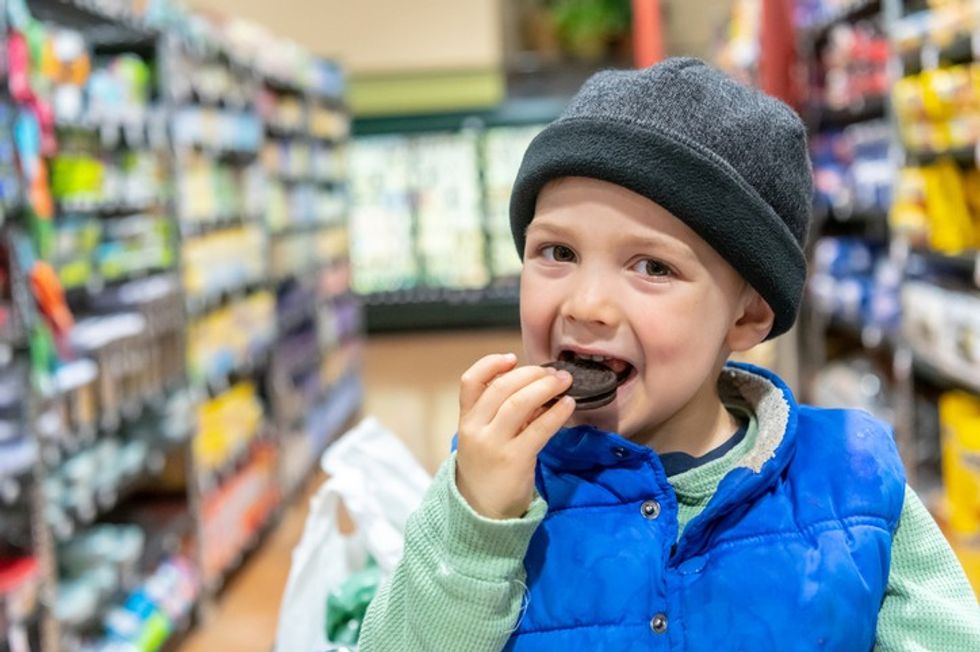
In fact, data shows that nearly 10 per cent of Sweet Biscuits purchased are typically consumed on the go, making them a convenient choice throughout the week. Of this, Chocolate Biscuit Bar’s account for 18 per cent towards the carried out of home segment whilst Mini Biscuits accounts for 20 per cent, informed Taylor.
As owners of some of the iconic biscuits in the category, FBC UK can help retailers make the most of this occasion.
Taylor said, “Year after year, we continue to see incremental growth within our individually wrapped formats, particularly in our mini biscuits and chocolate biscuit bars as these are an ideal option when on-the-go. Our minis range, Rocky bars and Wagon Wheels are all available in multipacks, allowing consumers to also purchase ahead of time and split out individually throughout the week.”
In mini biscuits, Maryland Minis to Jammie Dodgers Minis are the perfect option to grab while on-the-go.
Chocolate biscuit bars are not only enjoyed on-the-go but have also proven their value to people who buy them to eat in the comfort of their own home.
“Fox’s Rocky continues to see strong growth in the £517m Chocolate Biscuit Bars segment. In fact, Rocky is currently worth slightly under £30m and is on a strong growth trajectory as a great on-the-go option.”
Wagon Wheels, also in the chocolate biscuit bar category, is a popular choice with one in five consuming Wagon Wheels outside the home. Having been a favourite for generations, consumers love to pick up a Wagon Wheel for a sense of nostalgia.
Something to Drink
On the go soft drinks have always enjoyed a special place in convenience stores. In fact, soft drinks feature in 48 per cent of all on-the-go occasions, making them the number one on-the-go item bought in c-stores.
The opportunity that soft drinks create when the right range is on offer is huge. Energy drinks and cola are flying high, and we have also seen that adding interesting, limited-edition flavours into the mix can pay big dividends in driving impulse sales when it comes to on-the-go formats.
Britvic Soft Drinks Review shows that there is a growing demand for soft drinks consumed on the go.
Ben Parker, GB Retail Commercial Director at Britvic, comments, “We calculate that this occasion presents a chance to increase soft drinks sales value in the convenience retail channel by £400m a year by 2025. That equates to a sales boost of £8,400 per year for each c-store operating in the UK today.”
While soft drinks are the king of grab-and-go in convenience, there is lot of room for growth in the flavoured milk category as well.
The convenience channel now accounts for 44 per cent of sales within the total flavoured milk category, with coffee and chocolate flavoured milk remaining strong favourites.
Michelle Frost, general manager at Mars Chocolate Drinks and Treats (MCD&T) says, “Retailers can capitalise on this growing category by offering a selection of well-known brands. Our on-the-go sports cap across the 350ml range makes them a popular choice for impulse shoppers to grab on the go.”
To cater for the growing popularity of coffee and chocolate flavoured drinks, Mars Chocolate Drinks and Treats (MCD&T) expanded its selection with the launch of Mars and Galaxy Mocha Lattes.
Despite many milk drinks being ambient, and therefore helping with stock control, they are best presented to shoppers in refrigerators, chilled and ready to consume immediately. The Mars Chocolate Drinks and Treats full 350ml range includes Mars, Mars Caramel, Maltesers, Milky Way, Twix, Snickers, M&M’s Brownie and Galaxy.
Within beverages to go, the pace of category growth in RTD Coffee has been exceptional, and the sub-category has more than earned its place within all chilled soft drink fixtures. The category has experienced a significant step forward in terms of household penetration, average basket sizes and consumption growth and one of the most exciting things about this category is the speed at which it is evolving.
Adam Hacking, head of beverages at Arla, states, “For Starbucks chilled coffee, we respond to consumer consumption habits and harness trends to feed our innovation and attract shopper interest. The last few years of exponential growth in at-home convenience driven by the pandemic is a perfect example of this.
“In fact, such is its significance, at-home convenience is no longer a trend but a new, permanent, consumption habit and has been the driving force behind Starbucks’ product innovation. In March 2023 we extended the award-winning, large-format Starbucks Multiserve chilled coffee range to include Starbucks Multiserve Skinny Latte chilled coffee.”
The NPD also tapped into the consumer trend for less sugar in favourite products, a movement which also inspired the launch of the Starbucks Doubleshot Espresso No Added Sugar Multipack, giving loyal shoppers a more convenient and accessible way to enjoy the signature Arabica espresso coffee with smooth creamy milk for a quick uplift.
Starbucks range encompasses three key formats. Starbucks Chilled Classic Cups are inspired by the classic flavours served in Starbucks coffee houses including Latte, Macchiato and Cappuccino and targets young professionals. Starbucks Frappuccino range is sweeter and creamer than the classic range and includes caramel and vanilla flavours and tends appeal to a younger female shopper.
Starbucks Doubleshot Espresso range includes two bold shots of its signature espresso blend offering a strong coffee boost. The Starbucks chilled coffee portfolio also includes dairy free, vegan and no added sugar options to help broaden consumer appeal.
With warm and sunny days ahead, demand for chilled coffee on the go is expected to rise exponentially. The more variety a store can have, the better it will be for the sales.
Abigail Kelly, Head of Marketing and Insight at Crediton Dairy Ltd (house of Arctic Coffee), urges retailers to remain abreast with the key trends.
"Across all categories, including chilled coffee, consumers are gravitating towards products that offer additional nutritional benefits and will actively seek out brands that deliver on this. A clear front-runner here is Proteini, which is why this year Arctic Coffee is meeting this demand for consumers by bringing to market Hi Protein Caramel Latte, a delicious, chilled caramel latte with 15g Protein,” Kelly tells Asian Trader.
In July 2023, Arctic Coffee launched its Limited Edition range – which included Vanilla and Toffee Nut flavours – and this will continue throughout 2024.
As we’ve progressed through 2024, shoppers have looked for smaller indulgences and rewards such as a sweet treat or a drink and milkshakes are perfectly positioned to cater this trend.
Both YAZOO and Chocomel are perfectly positioned as ideal drinks to go. At the end of last year, YAZOO diversified its iconic portfolio with the introduction of a brand-new, HFSS-compliant, indulgent milkshake format Thick N' Creamy. This launch represents the first permanent NPD from the brand since 2016, proof of the serious investment in and backing of the proposition from parent company FrieslandCampina.
Thick N’ Creamy 300ml is available in grocery and convenience channels in two delectable flavours - Indulgent Chocolate and Creamy Strawberry.
As sustainability is always a key consideration for FrieslandCampina, the bottles are made from 100 per cent RPET with tethered caps and new, easy peelable sleeves to make recycling a doddle, whilst all the cocoa used in YAZOO’s chocolate products is certified by the Rainforest Alliance.
Katie Chadd, Business Unit Controller at FrieslandCampina, says, “We’re in a strong position when it comes to HFSS – all YAZOO milk drinks are HFSS-compliant. As a result, we can continue to invest in the category – with both above the line advertisements and in-store promotions, as well as feature and display. YAZOO is free from artificial sweeteners, flavours, or colours, high in protein and is a source of calcium and Vitamin B2, meaning it offers nutritional benefits that most of its competitors in the soft drinks category cannot.”
Furthermore, Chocomel launched a new plant-based variant last year that is now available nationwide. The plant-based drink has a cashew nut and pea milk formulation, offering the same chocolatey richness as the original, making it key for retailers to consider in their Big Night In offering.
Further to this, the up to nine months shelf life makes the carton a strong addition to a store cupboard. The one-litre carton packs are made from 88 per cent plant-based materials, using FSC-approved cardboard. They are also fully recyclable, including the lid.
Chocomel is proudly certified by the Rainforest Alliance, the world’s largest cocoa certification programme – meaning all cocoa used to create Chocomel’s unique premium taste is sustainable.
Both YAZOO and Chocomel have just launched major campaigns to increase penetration and drive brand awareness.
YAZOO, has unveiled a £6m marketing campaign, its biggest ever investment and double its outlay from 2023. Making a splash from now until July1 2024, the campaign shines a light on YAZOO’s indulgent new addition, the HFSS-compliant Thick N' Creamy milkshake, which launched last September.
Chocomel has also just kicked off six months of high-profile promotional activity, galloping out of the gate with a hero TV advert designed to raise brand awareness and increase penetration under the banner: ‘When Life Gives You Chocomel’.
Play Smart
Food-to-go is an interesting section where the retailer can experiment to figure out the best combination of offering for their clientele.
While it’s still important to offer plant-based options in your food-to-go range, there are some indications that demand may have peaked. Up until 2022 there was steady growth in the number of shoppers claiming to follow a vegan or vegetarian diet, but that has now plateaued.
However, it is best to keep a few plant-based options too to keep the range wide and wholesome.
Chilled coffee is the largest value segment of dairy drinks and should therefore be offered a prominent position on the shelf, with dedicated space offered to recognisable brands that offer high rate of sale. Starbucks is the largest dairy drinks brand and one of the top ten selling soft drinks brands and is therefore integral to capturing consumer attention.
It is important to give RTD coffee SKUs appropriate space within the feature, with multiple facings a keyway to encourage a purchase. RTD coffee is also an ideal addition to meal and link deal executions, many retailers are already experiencing the advantages of including these drinks in their existing offers.
Retailers should also consider transitioning from traditional soft drinks to energy and coffee drinks to go – milkshakes are the perfect product to place between these two areas.
Big Nights-in are still very much in and shoppers are stocking up accordingly. YAZOO’s larger format 1 litre bottles are available for £1.99 PMP, whilst the core 400ml bottle is available in £1.49 PMP. The 400ml PMP is a great option for the impulse and drink now occasion, whilst the 1 litre bottles are perfect for take-home and sharing moments, meaning there really is something for everyone. Likewise, Chocomel’s750mlcarton is perfect for those big night in occasions.
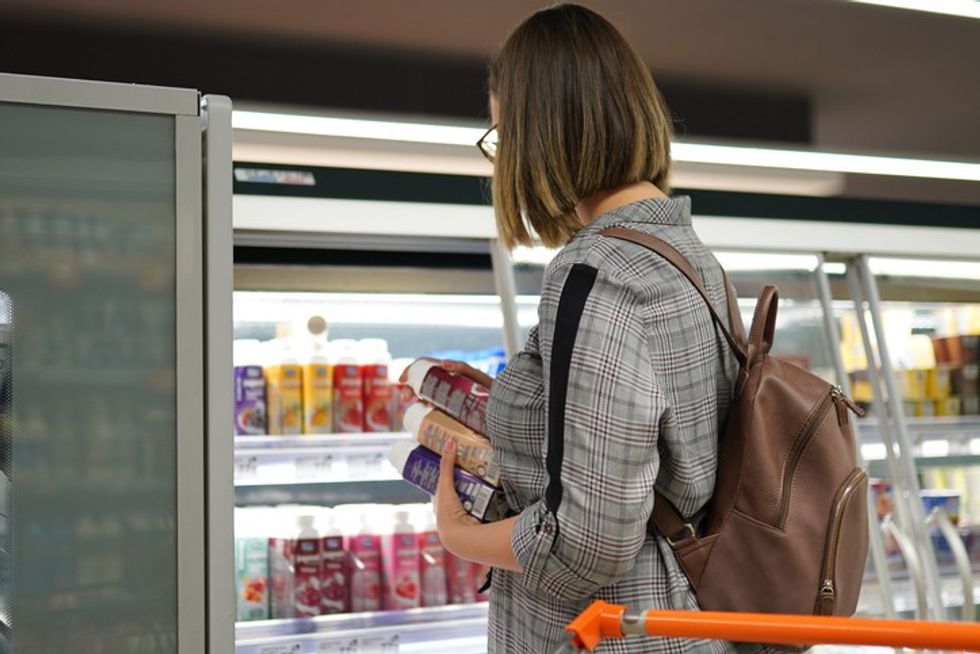
Visibility is key, and stores can convert more shoppers to buy into the supported brand and generate category growth if the brands are easy to find.
Chadd states, “Though YAZOO and Chocomel are an ambient products, with longer shelf life than typical milk products, retailers should consider stocking the drinks in chiller aisles with more footfall than back of store sections. This allows the product to be seen more regularly by consumers and can lead to more frequent incremental sales opportunities. Additionally, brand blocking placement on shelf and targeted POS can help to further attract shoppers’ attention.”
Retailers should offer a tiered meal deal range that allows store operators to avoid hiking costs of meal deals while bringing in more premium and foodservice-standard ranges. Highlighting local range, by stocking cakes, cupcakes, pastries and so on from local bakeries, is also a great idea to build a unique brand image.
Don’t underestimate the importance of coffee in driving footfall. But it does need to be done well.
In the words of global FTG expert Matt Cundrick, a sad-looking, poorly maintained coffee machine will likely detract from the rest of the store rather than enhance its appeal so consider the ongoing resource you will need to dedicate to upkeep and maintenance. Retailers should consider coffee dwell time (during preparation of the drink) as an up-selling opportunity by offering pastries, donuts or sweet treats alongside the coffee unit.
Noteworthy here is that demand for nuanced health and premium quality is driving new product development in the market, with most new products surveyed aligned with healthier eating, carrying price points of +£4.00, according to Lumina Intelligence report. Vegan, high protein and high fibre products all gained share year-on-year while gut health and immune system boosting products are the new kids on the block.
Drinks with natural, low caffeine and energy boosting ingredients are also trending as consumers look more towards health benefits, such as supporting immunity and reducing fatigue. Ginger shots, for example, are fast appearing on mainstream shelves in grocery and foodservice, helping to target those wishing to reduce caffeine intake and provide a natural kick of energy.
Era of kiosks
One of the latest trends in FTG is vending solutions that are set to change the future of convenience and forecourt retailing.
Rustlers’ new small footprint unit is expected to help small- and medium-sized stores to drive food-to-go sales and profits.
Designed to be a low-risk, low-commitment food-to-go solution, the units contain a digital screen for advertising, alongside the pre-programmed microwave featured in previous versions. Machines are priced from just £2,500 and finance options are available.
The units are easy to set up, straightforward to clean and are powered by just a single plug socket. The units also contain a small chiller underneath, which can store eight cases of Rustlers’ Cook in The Box bestsellers, saving valuable stockroom space and ensuring a straightforward shopper experience.
The machines can be used to serve all Rustlers’ Cook in The Box products – The Supreme Cheese Melt Burger, Peri Peri Chicken Tenders and All Day Breakfast Sausage Muffin.
Stores that introduce the machines in store before the end of the year will receive a free Rustlers food-to-go launch kit. These kits include one
These kits include one fridge full of stock, one light
support materials to help retailers advertise they have hot food available in store.
Commenting on the launch, Davison from Rustlers, said: “With 51 per cent of Rustlers consumed at lunchtime, the brand is already synonymous with being a market leader in quick food solutions on the move. The launch of our new food-to-go unit and Launch Kit demonstrates our commitment to helping smaller stores win their fair share of the growing lunchtime opportunity.”
The machines are currently rolling out in Welcome stores across the country, following a successful trial in the group’s Marchwood store in the New Forest.
Mike Fitton, head of franchise operations for Welcome, said, “The unit is easy for customers and staff to use. The machine is pre-programmed, and staff just has to clean it once a day.”
Elsewhere, Northern Ireland-based Bludot Technologies’ most recent development is also creating waves. Through this digital self-serve, food-to-go kiosk solution, customers can order and pay for their food using the self-serve kiosks, or go to the collection point in store to grab ‘n go.
“Self-service is no longer the future; self-service is the now,” says Frank Kilpatrick, founder and CEO of Bludot Technologies.
“Queue reduction, spend maximisation and footfall inflation is only the beginning. Self-service checkouts provide a seamless service, displaying product details including nutritional and allergen information that could otherwise be missed, and enables fast, secure payment,” Kilpatrick tells Asian Trader, adding that convenience and forecourt sectors are perfectly placed to adopt self-service kiosk (SSK) technology.
Such kiosks reduce labour costs and can maximise the efficiency of hot food and deli staff.
“Kiosks improve speed of service for customers, and the accuracy of orders. We’ve seen an increase in hot food and deli footfall in SPAR Mallusk, sales also increase due to the up-selling option; and it is a very attractive option for millennial shoppers,” says Frank. “It is a great addition if stores are looking to increase basket spend. It is exceptional that a new technology will offer both cost reductions and increased revenues. The return-on-investment is extremely positive.”
The kiosk will display product details including nutritional and allergen information. It also meets expectations on cashless payment and convenience as well as securely take fast mobile and card payments.
Julia Galbraith, Food To Go Brand Development Manager for Henderson Wholesale, says, “Our food-to-go shoppers are often pressed for time and really appreciate the ease of ordering and speed that service kiosk ordering provides, along with the additional detail available such as allergen info and customization options.”
It’s a wrap
Looking beyond 2024, Lumina Intelligence believes that the sector could reach a market value of £25bn by 2027.
Another industry analyst IGD believes that although all sectors will experience growth from 2023 to 2028, convenience stores will be among long-term winners, stealing share from the other sectors.
Convenience stores, forecourts and others will benefit from being accessible for food-to-go missions and their strong value positioning, especially with meal deals, they forecast, adding they are “often designed with the food-to-go customer in mind, resulting in an optimised journey and seamless experience for the consumer”.
Owing to the busy lifestyle and pressure on budgets over the last few months, purchasing a snack rather than a complete large meal such as lunch or dinner is more popular. Therefore, store operators are advised to consider offering saver menus with smaller and popular food items, including wraps and burgers, to tap into snack demand.
In the coming months, consumers are expected to increase their spending on food-to-go as they head out more in the warm weather while inflation is also expected to slow down.
Clearly, the outlook for food-to-go ranges in convenience stores is exceptionally promising, with forecasts indicating continued growth and opportunities for expansion. By staying attuned to consumer preferences, embracing innovation, and fostering strategic partnerships, retailers can position themselves as leaders in this thriving sector.
Make sure that your store too is well-positioned to get a piece in this pie.






